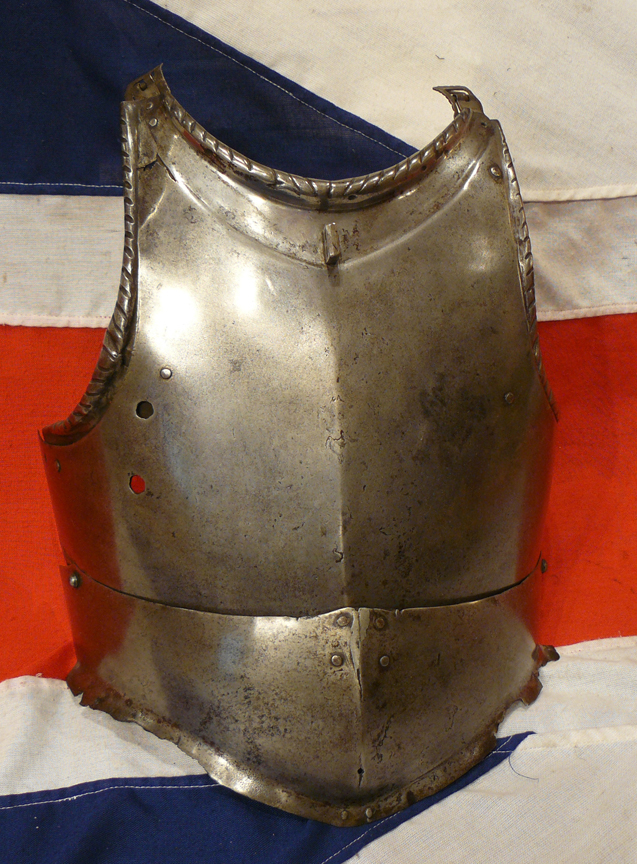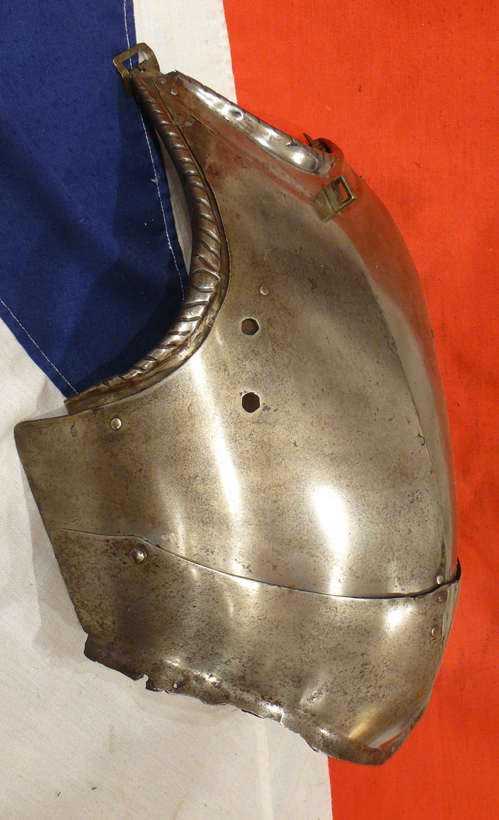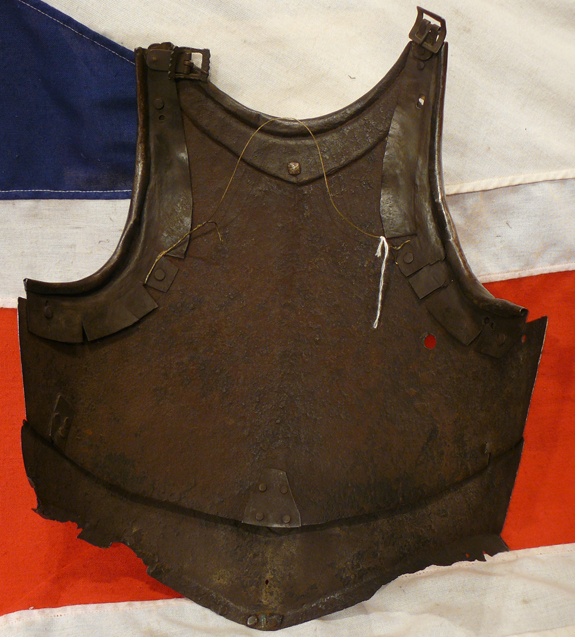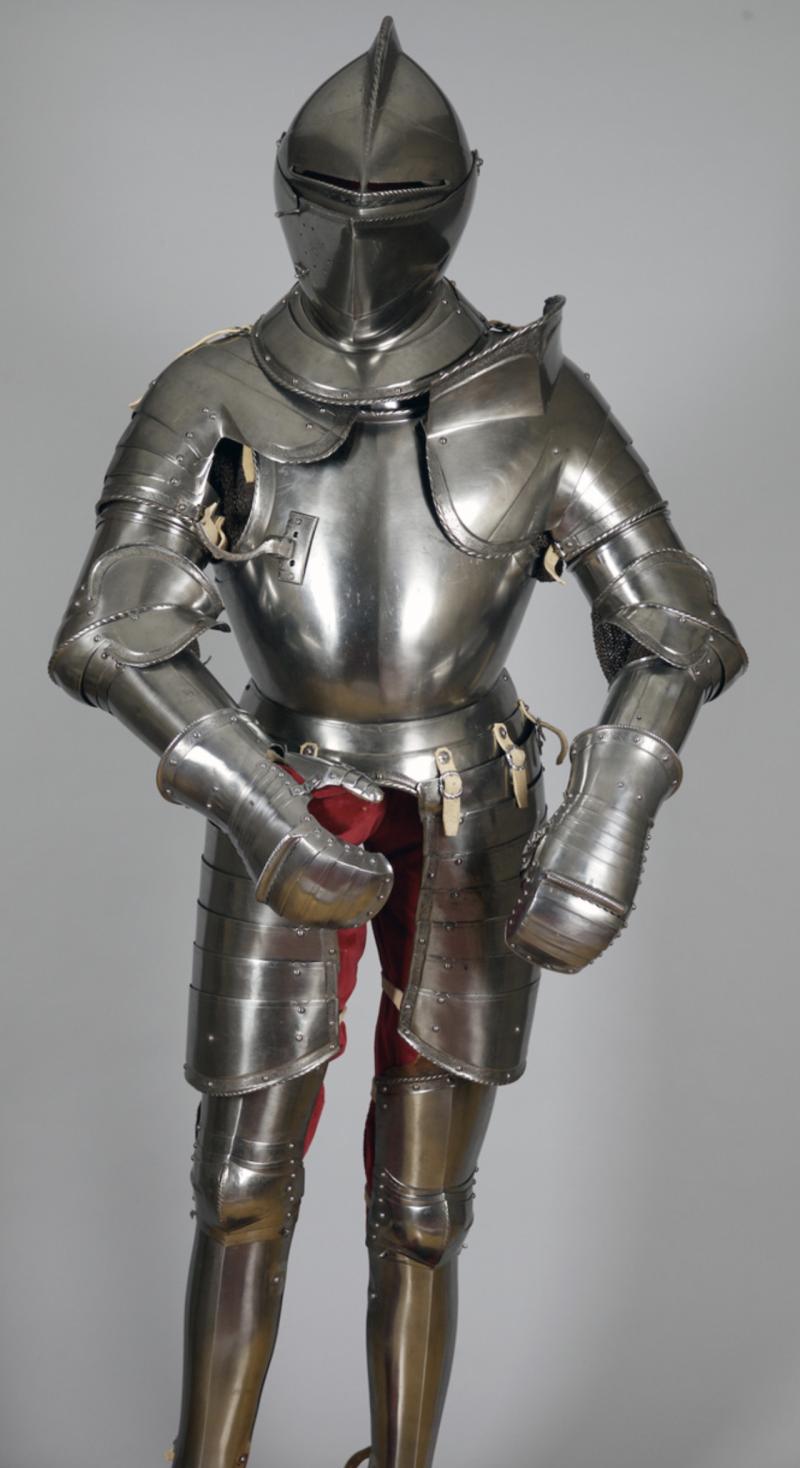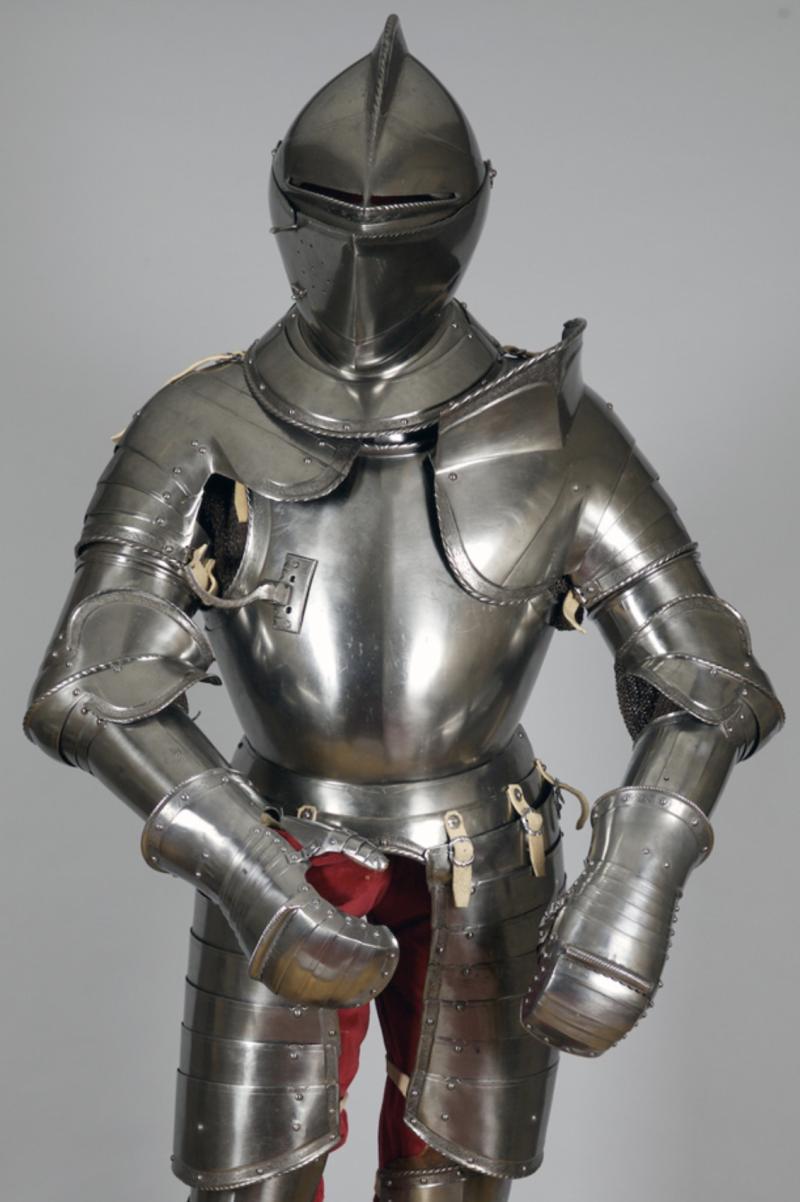A Very Fine Original 16th Century Italian Field Armour Breast Plate Circa 1520
For field combat and with mountings for use in the tilt.
A very fine and original piece of finest Italian armour. Medially ridged breast plate with moveable gusset and roped arm and neck-openings. With two alligned holes for resting a lance for the tilt. The plate also has a key slot for an addition of reinforcing plate also for the tilt or joust. Jousting is a martial game or hastilude between two horsemen and using lances, often as part of a tournament. The primary aim is to strike the opponent with the lance while riding towards him at high speed, if possible breaking the lance on the opponent's shield or armour, or by unhorsing him.
Jousting emerged in the High Middle Ages based on the military use of the lance by heavy cavalry. It transformed into a specialised sport during the Late Middle Ages, and remained popular with the nobility both in England and Germany throughout the whole of the 16th century (while in France, it was discontinued after the death of king Henry II in an accident in 1559). In England, jousting was the highlight of the Accession Day tilts of Elizabeth I and James I, and also was part of the festivities at the marriage of Charles I. The medieval joust took place on an open field. Indeed the term joust meant "a meeting" and referred to arranged combat in general, not just the jousting with lances. At some point in the 14th century, a cloth barrier was introduced as an option to separate the contestants. This barrier was presumably known as tilt in Middle English (a term with an original meaning of "a cloth covering"). It became a wooden barrier or fence in the 15th century, now known as "tilt barrier", and "tilt" came to be used as a term for the joust itself by ca. 1510. The purpose of the tilt barrier was to prevent collisions and to keep the combatants at an optimal angle for breaking the lance. This greatly facilitated the control of the horse and allowed the rider to concentrate on aiming the lance. The introduction of the barrier seems to have originated in the south, as it only became a standard feature of jousting in Germany in the 16th century, and was there called the Italian or "welsch" mode. Dedicated tilt-yards with such barriers were built in England from the time of Henry VIII.
Specialized jousting armour was produced in the late 15th to 16th century. It was heavier than suits of plate armour intended for combat, and could weigh as much as 50 kg (100 lb), compared to some 25 kg (50 lb) for field armour; as it did not need to permit free movement of the wearer, the only limiting factor was the maximum weight that could be carried by a warhorse of the period
The suit of armour in the collection shown in the gallery, with a most similar breastplate, from the same period and country of origin, was manufactured in Italy around 1540. It would have been used in tournaments or battles fought on horseback. The armour is made of steel and also includes a tournament helmet, forged from a single piece. A holder for the kind of lance used in tournaments is bolted to the breastplate.
Code: 22317
3950.00 GBP

